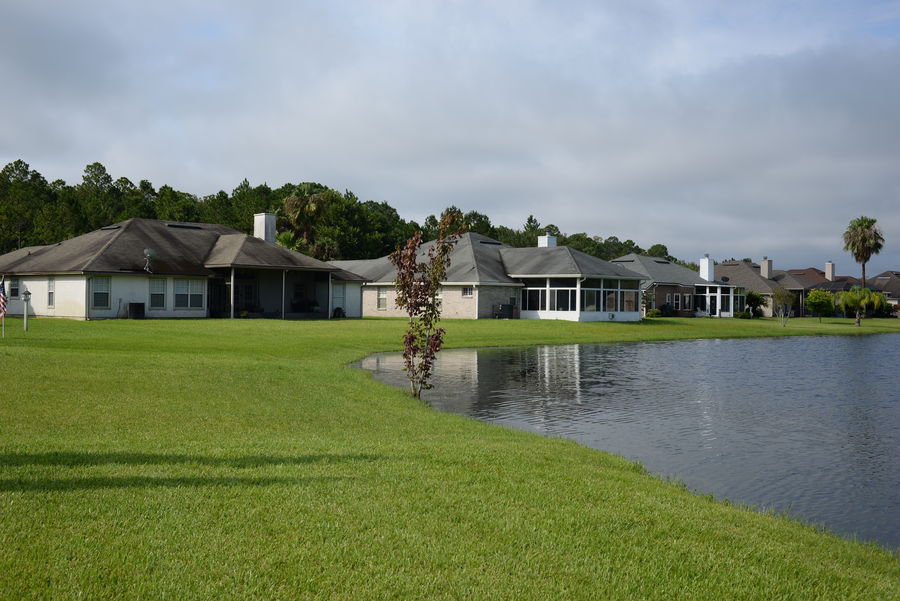Nikon's Active D-Lighting and Matrix vs. Spot Metering
Aug 4, 2021 06:03:43 #
Canon, Sony and others have similar functionality but use their own names for them.
The next post will show three examples of a high contrast scene taken with a Nikon Df:
1. Active D-Lighting off, exposure based on matrix metering at 1/13s.
2. Active D-Lighting set to Extra High 2, same 1/13s exposure.
3. Active D-Lighting set to Extra High 2, exposure based on matrix metering at 1/40s.
The camera's JPEG histograms are different in all three examples. So are the resulting images. But since the exposure is the same for the first two, the raw histograms are identical.
The third example got 1.7 stops less exposure (the difference between 1/13s and 1/40s).
If I had tried to expose to the right (ETTR) based on the camera's JPEG, the first two images would have told me to reduce the exposure because there is a spike on the right end of the histogram. However, the third image has almost no spike and the raw file agrees with that.
So even if the camera's histograms are different in all three cases, the right end of the raw and JPEG histograms show about the same information - that the camera's JPEG highlights do not blow out before the raw file does.
When I spot metered the scene with and without Active D-Lighting turned on I got the same readings each time. In fact, the spot meter is not affected by any other JPEG setting such as white balance, including UniWB.
The next post will show three examples of a high contrast scene taken with a Nikon Df:
1. Active D-Lighting off, exposure based on matrix metering at 1/13s.
2. Active D-Lighting set to Extra High 2, same 1/13s exposure.
3. Active D-Lighting set to Extra High 2, exposure based on matrix metering at 1/40s.
The camera's JPEG histograms are different in all three examples. So are the resulting images. But since the exposure is the same for the first two, the raw histograms are identical.
The third example got 1.7 stops less exposure (the difference between 1/13s and 1/40s).
If I had tried to expose to the right (ETTR) based on the camera's JPEG, the first two images would have told me to reduce the exposure because there is a spike on the right end of the histogram. However, the third image has almost no spike and the raw file agrees with that.
So even if the camera's histograms are different in all three cases, the right end of the raw and JPEG histograms show about the same information - that the camera's JPEG highlights do not blow out before the raw file does.
When I spot metered the scene with and without Active D-Lighting turned on I got the same readings each time. In fact, the spot meter is not affected by any other JPEG setting such as white balance, including UniWB.
Aug 4, 2021 06:13:25 #
It's no coincidence that the first two raw histograms are identical. Active D-Lighting does not affect the raw data.
However, it may be a coincidence in this case that Active D-Lighting combined with matrix metering happened to achieve the correct ETTR. A different scene might have gotten different results.
Nevertheless, it shows that the right end of the JPEG histogram is pretty much in lock-step with the right end of the raw histogram.
However, it may be a coincidence in this case that Active D-Lighting combined with matrix metering happened to achieve the correct ETTR. A different scene might have gotten different results.
Nevertheless, it shows that the right end of the JPEG histogram is pretty much in lock-step with the right end of the raw histogram.
Sample 1
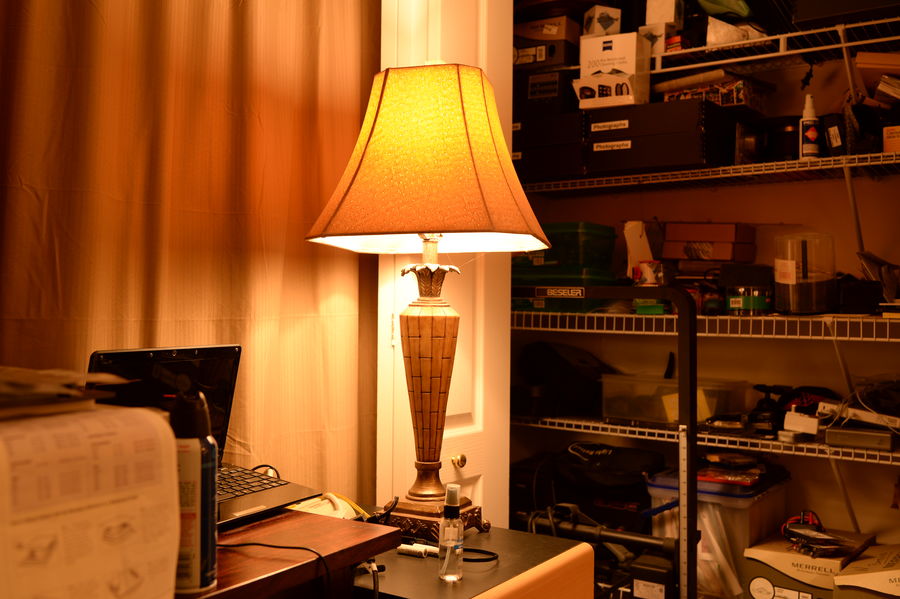
(Download)
Raw histogram 1
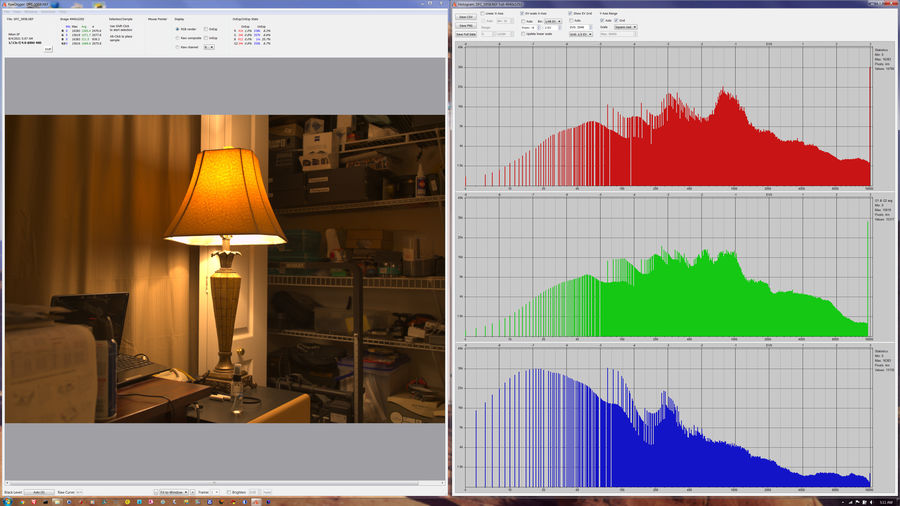
(Download)
Sample 2
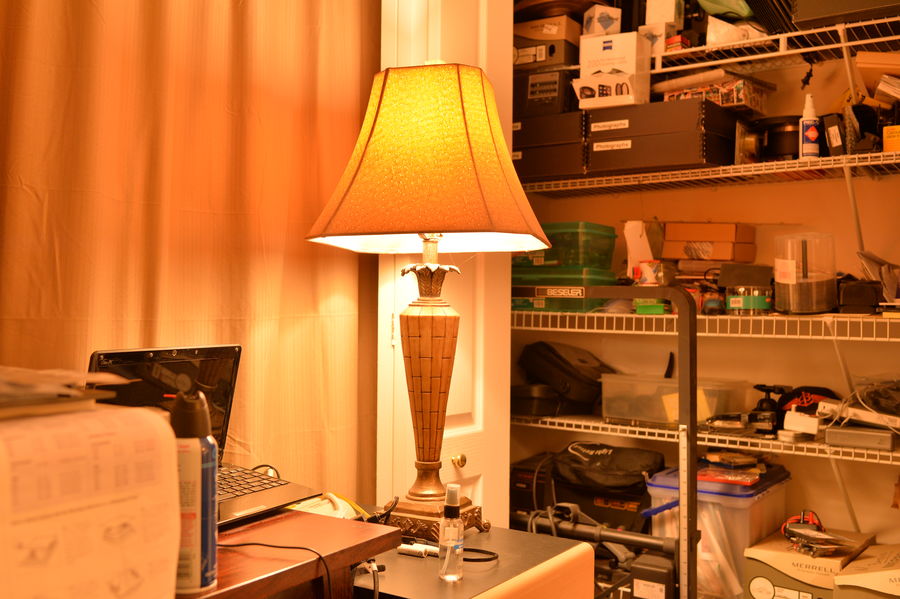
(Download)
Raw histogram 2
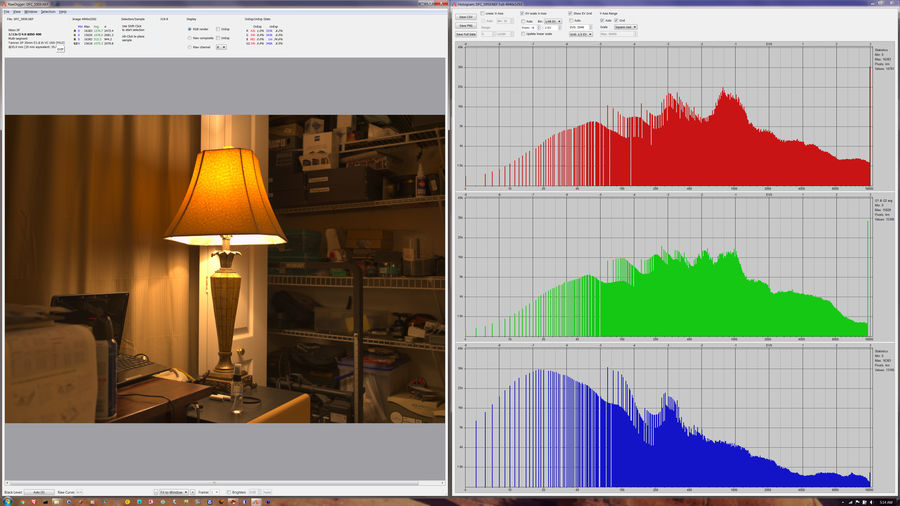
(Download)
Sample 3
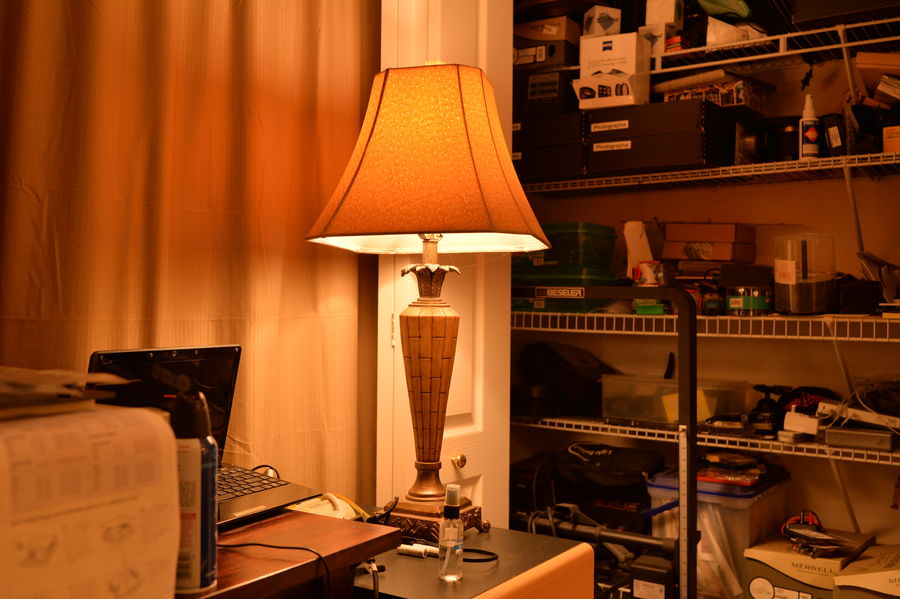
(Download)
Raw histogram 3
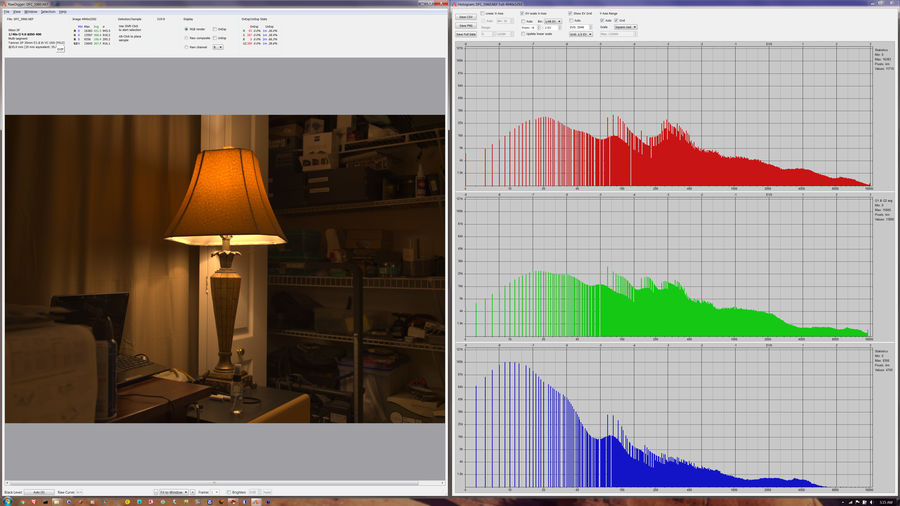
(Download)
Aug 4, 2021 07:40:08 #
I assume that working with the highlights/shadows sliders (or other tools such as curves) in post would accomplish the same but I haven't tested it.
Aug 4, 2021 08:00:46 #
ecobin wrote:
I assume that working with the highlights/shadows sliders (or other tools such as curves) in post would accomplish the same but I haven't tested it.
You can do a lot in post if you haven’t already blown the highlights, even if you don’t expose to the right.
Aug 4, 2021 08:43:47 #
larryepage
Loc: North Texas area
selmslie wrote:
Canon, Sony and others have similar functionality ... (show quote)
I have been studying and working to learn how to use Active-D Lighting this summer. As you point out, it is a JPEG function only, and has no effect on the raw file. It also has no direct effect on exposure, and makes no change to the middle tones of your image.
What it does do is flatten the tails of the response curve, extending the dynamic range in a captured image by up to two or three stops. As your test images clearly show, the most visible part of that effect is at the shadow end of the curve. So far, I'm still working to see how to gain best benefit at the highlight end.
I am finding that using the proper metering mode for the subject is critical to getting the best benefit from Active-D. After that, skillful use of Exposure Compensation is the next step. Use of the Highlight Weighted Metering mode seems to be a good choice, if your camera has it. You will may want to use a little EC, though, because HWM is not quite as aggressive as true ETTR. Care will be required if you are trying to get enhanced JPEGs and ETTR raw files, because the interactions of the combination could push farther than you want to go.
A final note...I almost never use in-camera spot metering. The spot is simply too big to be of accurate, reliable value.
Please keep us posted as you work through this.
Aug 4, 2021 09:05:45 #
larryepage wrote:
I have been studying and working to learn how to u... (show quote)
If I had been exposing on Aperture priority the Active D-Lighting setting in combination with matrix metering would have changed the exposure from 1/13s to 1/40s.
You are seeing what I found, that higher levels of Active D-Lighting lower the overall contrast. But only the left (shadow) end of the curve is actually affected. The right end, where the raw and JPEG blow out, is affected only by exposure.
larryepage wrote:
A final note...I almost never use in-camera spot metering. The spot is simply too big to be of accurate, reliable value.
I actually never use in-camera metering in broad daylight. Sunny 16 (or 0.3 stops darker) work for all cases where there are bright white highlights. I always shoot raw on Manual and it does not fail here in sunny Florida.
Incidentally, I meant to post the camera's histograms:
Sample 1
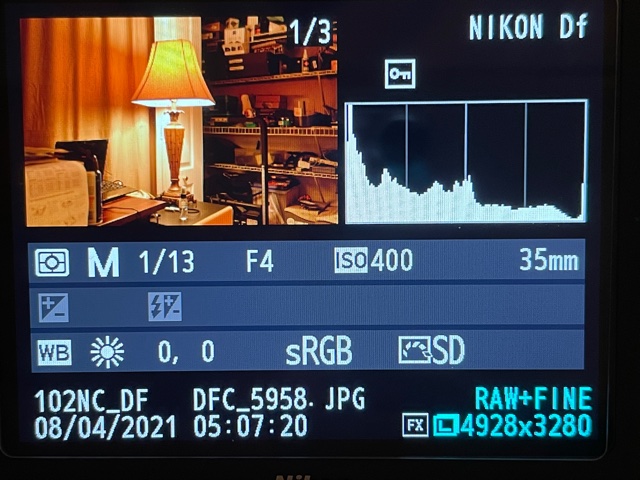
Sample 2
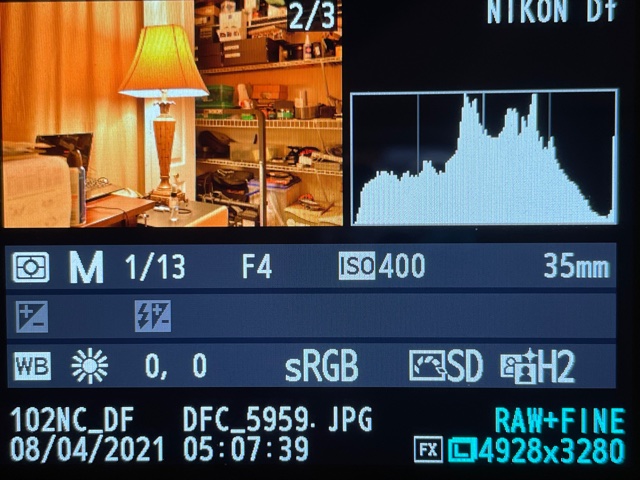
Sample 3
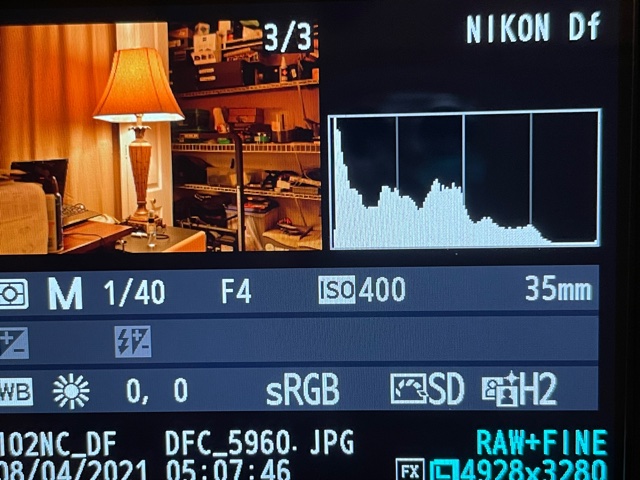
Aug 4, 2021 10:21:16 #
larryepage
Loc: North Texas area
selmslie wrote:
I actually never use in-camera metering in broad daylight. Sunny 16 (or 0.3 stops darker) work for all cases where there are bright white highlights. I always shoot raw on Manual and it does not fail here in sunny Florida.
Incidentally, I meant to post the camera's histograms:
Incidentally, I meant to post the camera's histograms:
Got it. So Active-D is doing two things to increase dynamic range...reducing exposure to "extend" the top end, and flattening the curve to extend the low end. A natural cost of doing that is reducing contrast so that all of the additional information will fit within the 8 bits available within JPEG. I have found that this often results in a directly printable image. One trick that I've discovered separately is that increasing saturation and sharpness can provide some compensation for the loss of contrast. (Remember that the Sharpness adjustment is a subtractive one...the "9" is really as the sensor captured the image...the camera doesn't artificially add sharpness beyond what was in the original capture.) The other option would be to save as a 16 bit TIF and crank the contrast back in. But you'd have to have some extra bits available in order to do that.
Aug 4, 2021 10:41:55 #
selmslie wrote:
I actually never use in-camera metering in broad daylight. Sunny 16 (or 0.3 stops darker) work for all cases where there are bright white highlights. I always shoot raw on Manual and it does not fail here in sunny Florida.
Incidentally, I meant to post the camera's histograms:
Incidentally, I meant to post the camera's histograms:
You shoot every thing in manual. Did the meter reading change so that you would change the shutter speed or you just change the shutter speed? I think the matrix metering reduces exposure when Active D lighting is on so that's why I don't use active D lighting any more.
Aug 4, 2021 11:02:05 #
larryepage
Loc: North Texas area
BebuLamar wrote:
You shoot every thing in manual. Did the meter reading change so that you would change the shutter speed or you just change the shutter speed? I think the matrix metering reduces exposure when Active D lighting is on so that's why I don't use active D lighting any more.
The whole point of Active-D is to increase the captured range of tonality from about 8 zones to close to 11 zones for JPEG images (depending on the amount of effect selected). It does that by reducing exposure by about 1.5 stops (as selmslie has demonstrated) and by flattening the response curve at the shadow end to pick up an additional 1.5-2 stops in the shadows. It actually does this no matter what metering mode you are doing (but I need to do some experimenting today to see what happens with Highlight Weighted Metering, which may be different). Of course, the exposure change can be readily overridden by dialing in 1.5 stops (or whatever you'd like) of Exposure Compensation. When I use this function, it is almost always because I'm interested in better shadow detail...there are other, better ways to deal with highlights. So it's just like any of the other camera functions. It's necessary to learn how it works, then figure out how to apply it to get the best benefit for what you are doing. I've learned that 11 zones are not always better than 8. But when they are, the function is very handy and useful.
Aug 4, 2021 11:04:32 #
larryepage wrote:
Got it. So Active-D is doing two things to increase dynamic range...reducing exposure to "extend" the top end, and flattening the curve to extend the low end. ....
In #1 without Active D the highlights are already overexposed.
But if you look at #1 and #2, both have blown raw highlights at 1/13s and both need less exposure. That's why #3 at 1/40s worked and the other two did not.
Incidentally, I did not look at the camera's histogram until later. I set the exposure by centering the indicator in the viewfinder in #1. For #2 I used the same exposure. Since matrix metering indicated overexposure I reduced it to 1/40s for #3.
Aug 4, 2021 11:18:09 #
selmslie wrote:
It's no coincidence that the first two raw histograms are identical. Active D-Lighting does not affect the raw data.
However, it may be a coincidence in this case that Active D-Lighting combined with matrix metering happened to achieve the correct ETTR. A different scene might have gotten different results.
Nevertheless, it shows that the right end of the JPEG histogram is pretty much in lock-step with the right end of the raw histogram.
However, it may be a coincidence in this case that Active D-Lighting combined with matrix metering happened to achieve the correct ETTR. A different scene might have gotten different results.
Nevertheless, it shows that the right end of the JPEG histogram is pretty much in lock-step with the right end of the raw histogram.
What tool are you using to display the raw histogram?
Aug 4, 2021 11:27:19 #
BebuLamar wrote:
You shoot every thing in manual. Did the meter reading change so that you would change the shutter speed or you just change the shutter speed? I think the matrix metering reduces exposure when Active D lighting is on so that's why I don't use active D lighting any more.
The recommended shutter speed changes with Active D if matrix metering is also in use.
However, this is all academic since I always develop from raw and don't use the camera's meter.
Here is an example of how Sunny 16 can save me a lot of metering. I had the ISO set to 100 and the aperture to f/8. That means that I need a shutter speed of 4xISO - 1/400s. The scene is in full sun but the clouds are not bright white because there is rain coming. The raw histogram is within one stop from blowing out the green channel. That's not ETTR but you can also see that the dynamic range of the scene is just over 7 stops. If I had lowered the shutter speed to 1/200s it would have been ETTR, the JPEG would have been brighter and I would have had to immediately use the Exposure slider in my raw conversion program setting it to -1. That's simply a wasted of time and effort.

Not only the is the raw file going to be a piece of cake if I wanted to develop it, even the JPEG SOOC is perfectly acceptable.
Aug 4, 2021 11:30:13 #
JD750 wrote:
What tool are you using to display the raw histogram?
RawDigger
It's a bargain at about $20 and it's sometimes on sale for less. It's worth a lot more.
Aug 4, 2021 11:39:01 #
selmslie wrote:
Thanks!
Aug 4, 2021 16:00:26 #
If you want to reply, then register here. Registration is free and your account is created instantly, so you can post right away.




